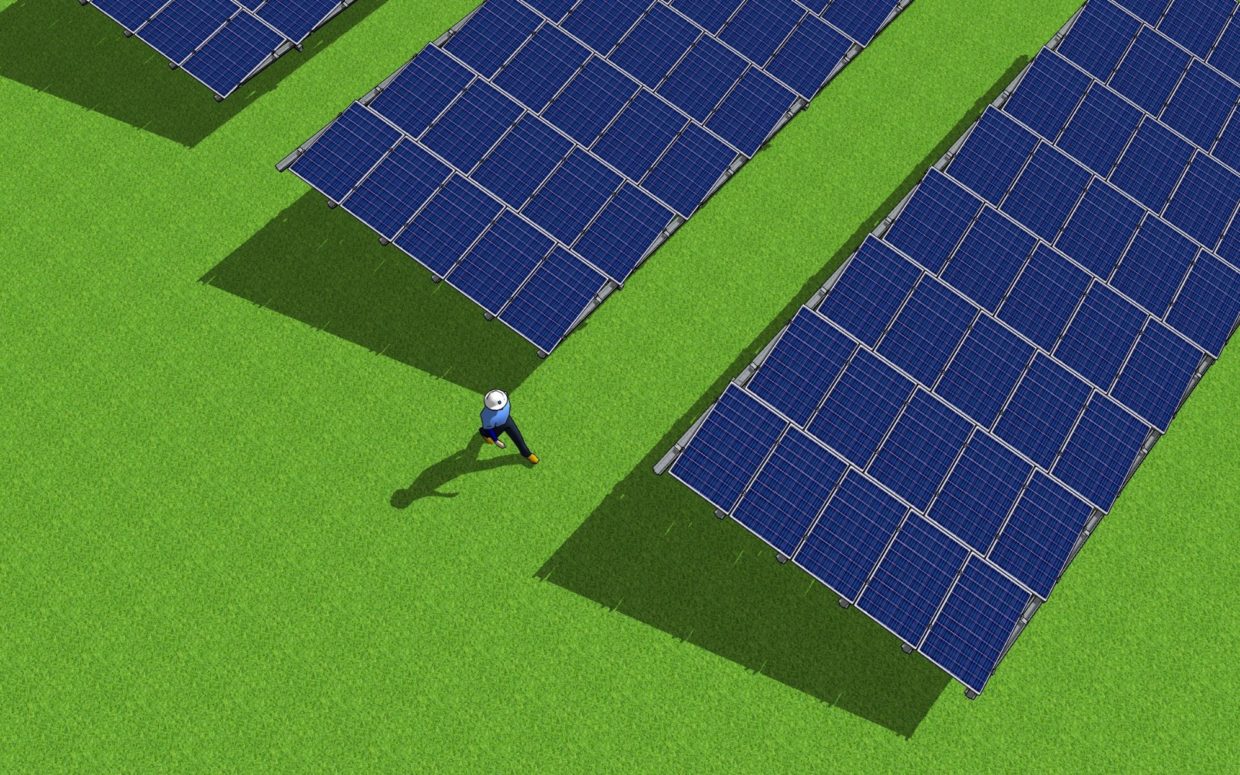Solar plant designs are changing. With these posts I’d like to contribute with several new technologies that I’ve developed over the last couple of years.
In my last post, the X10 solar plant design, the solar panels were installed in a „close to portrait“ position to keep them cleaner due to better evacuation of (dirty) water. However, there are solar project developers that prefer to have the panels installed in a landscape orientation. One possible answer is the solar plant design „X10 landscape“.
Like before you’re always very welcome to discuss the systems. Please feel free to like or share this posting. You can also invite me to your personal LinkedIn network if you would like to discuss these technologies personally. Please note: We do not manufacture solar products, e.g. solar racking systems. We are offering direct licenses to solar project developers on a pay-per-site basis.
solar plant design (2): X10 landscape solar parks
Adressed solar problem: yield losses due to soiling
Most of today’s solar panels are embedded in aluminum frames. This frame triggers a significant problem when panels are installed at low slope angles (e.g. less than 20 degrees). The lower frame rail of the panel builds a horizontal raised rib at the lower edge of the module. This rib causes a back-water effect. The filthy water is not correctly run off resulting in the accumulation of dirt on the glass alongside the lower frame rail. This layer of dirt casts a shadow on the underlying cells, which often results in significant loss in yield.
X10 solution: rotate the panel, create a slope
 The X10 solar system overcomes this problem in a simple, yet extremely effective way: By rotating the panel by a couple of degrees (e.g. 10 degrees) on its own plane, the horizontal corrugation disappears. The lower frame rails now both show slopes ensuring proper runoff of rainwater. The panel will remain clean, even at low slope angles.
The X10 solar system overcomes this problem in a simple, yet extremely effective way: By rotating the panel by a couple of degrees (e.g. 10 degrees) on its own plane, the horizontal corrugation disappears. The lower frame rails now both show slopes ensuring proper runoff of rainwater. The panel will remain clean, even at low slope angles.
Main benefits:
- perfect self-cleaning capabilities for reliable energy yields
- lower module angles for higher ground coverage ratios
- off-the-shelf hardware, easy installation
- the solar panel’s „max. load“ clamping zones are fully respected
- reduced maintenance cost due to longer module cleaning cycles


